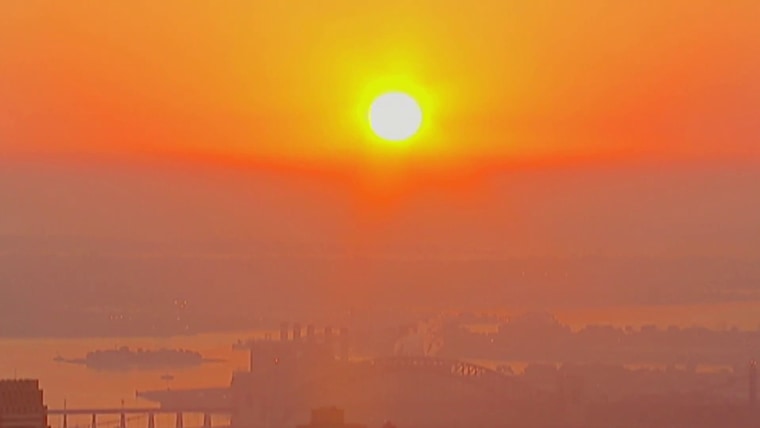The once-dormant California lake resurrected in this year’s extreme sequence of storms won’t disappear anytime soon.
Tulare Lake, which refilled for the first time in 40 years after atmospheric river storms pummeled California with snow and rain, is now receding, but it will take at least a year to evaporate entirely, experts said.
“We are still going to have a Tulare Lake next year,” said Jeffrey Mount, a senior fellow at the Water Policy Center of the Public Policy Institute of California.
The sudden reappearance of the lake, which was drained for farmland in the late 1800s, has caused hundreds of millions of dollars in agricultural losses and will require a substantial cleanup effort once the water has gone, as flooded farm buildings, vehicles, homes and electrical infrastructure still lurk within its waters.
Pacific Gas and Electric this spring used divers and helicopters to pluck critical electrical infrastructure off the lake bed. And the sheriff’s office recently bought a new airboat so it could travel across the water’s surface without snagging a propeller in debris floating in the lake or lurking beneath its surface.
California’s weather swings wildly from wet to dry, a pattern that experts expect to grow more pronounced as the atmosphere warms with climate change. Tulare Lake has become a symbol of the consequences of extreme precipitation in California, where decades-old planning and engineering face new tests.
Tulare Lake grew to cover nearly 114,000 acres, according to satellite measurements from the California Department of Water Resources. The agency said the lake levels have decreased since early June, and it now stretches over about 111,000 acres, according to agency spokesperson Jason Ince.
Experts say the water will eventually evaporate completely. The lake’s longevity largely depends on the seasonal trend for precipitation this winter.
“Everything depends on what happens next winter,” Mount said.
The lake is now murky and polluted with farm fertilizers, fuel and other pollutants, said Sgt. Nate Ferrier of the Kings County Sheriff’s office, who toured the lake recently.
“It’s expansive — mile after mile of water,” Ferrier said, likening the experience to floating through “a ghost town on water.”
The lake — which stretched about 10 miles across this year, according to satellite images — is still a shadow of its historical extent. It was once the largest body of freshwater west of the Mississippi.
Some wildlife has returned. Ferrier said birdsong resonated across the water during his visit. From shore, he saw a fish leap from the surface.
Some environmental advocates and the Tachi Yokut Tribe have advocated that California seek to keep water in the lake and allow the return of wetlands that were once home to abundant wildlife, according to the Los Angeles Times.
The lake’s resurgence has been a blow to some farmers.
During spring flooding, “we had roughly 60,000 cows that had to be relocated because of the floods,” said Matt Watkins, president of the Tulare County Farm Bureau.
Jimmy Hook, the Kings County agricultural commissioner, estimated in April that the county’s agricultural damages would exceed $300 million, with tomato, cotton and pistachio crops among those flooded out.
Those losses hurt, but the region narrowly avoided a more devastating outcome when cool weather this spring slowed the melt of snow from a historic snowpack that had threatened the region with more flooding.
“We got lucky,” Mount said, adding that net losses could be minimal because growers in areas unaffected by flooding were able to irrigate their fields generously.
Although the early flood response in the Tulare Basin was marked by tension and infighting, Mount said state, local and federal officials ultimately worked out projects — such as pumping, water diversions and temporary changes to water use — that minimized the damage.
“It started in chaos,” Mount said. “They really got their act together.”
For Ferrier and other residents near the lake, it’s been a difficult but fascinating episode, one that has offered a glimpse of what the landscape looked like before irrigators drained the lake more than a century ago.
“It’s sad to see some of this stuff flooded and sad to see the homes hurt and sad to see the farming industry take a hit, but it’s also quite an event. This lake was always here, and it’s kind of supposed to be here, if you think about it,” Ferrier said. “We all prayed for rain. We just all prayed a little too hard.”
Source: | This article originally belongs to Nbcnews.com











